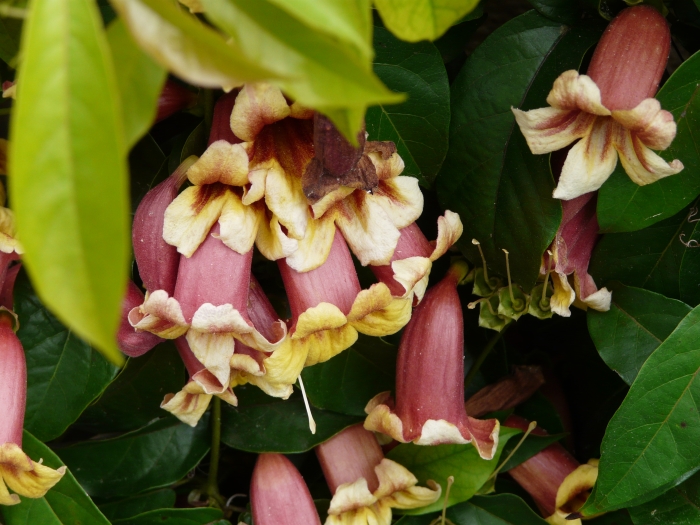Crossvine
(Bignonia capreolata)
Crossvine (Bignonia capreolata)
/
/

Père Igor
CC BY-SA 4.0
Image By:
Père Igor
Recorded By:
Copyright:
CC BY-SA 4.0
Copyright Notice:
Photo by: Père Igor | License Type: CC BY-SA 4.0 | License URL: https://creativecommons.org/licenses/by-sa/4.0 | Uploader: Père Igor | Publisher: Wikimedia Commons | Title: Bignonia_capreolata_Périgueux_(1).jpg | Notes: == {{int:filedesc}} == {{Information |Description=April 26, 2011 |Source=[https://www.flickr.com/photos/50352333@N06/5680980829/ Cross Vine (Bignonia capreolata)] |Date=2011-04-25 17:40 |Author=[https://www.flickr.com/people/50352333@N06 Jay Sturner] f...










































































Estimated Native Range
Summary
Bignonia capreolata, commonly known as Crossvine, is a vigorous, semi-evergreen vine native to woodland areas and forest margins in the central and southern United States. It can climb to heights of 50 feet (15 meters) by using tendrils with adhesive disks, allowing it to attach to various surfaces without twining. The plant features two-toned, trumpet-shaped flowers, typically red with a yellow throat, which bloom profusely in spring and sporadically throughout the summer. The flowers are known for their mocha fragrance and are highly attractive to hummingbirds and butterflies. Crossvine’s leaves are glossy, dark green, and sometimes nearly purple, arranged in opposite pairs with terminal tendrils.
Crossvine is valued for its showy flowers and ability to cover structures quickly, making it an excellent choice for trellises, fences, and arbors. It is also used for erosion control on slopes. While it can spread aggressively through stolons, proper management and pruning can keep it in check. Crossvine thrives in full sun to part shade and prefers well-drained soils, though it is tolerant of a range of soil conditions. It is relatively low-maintenance once established, requiring only moderate watering.CC BY-SA 4.0
Crossvine is valued for its showy flowers and ability to cover structures quickly, making it an excellent choice for trellises, fences, and arbors. It is also used for erosion control on slopes. While it can spread aggressively through stolons, proper management and pruning can keep it in check. Crossvine thrives in full sun to part shade and prefers well-drained soils, though it is tolerant of a range of soil conditions. It is relatively low-maintenance once established, requiring only moderate watering.CC BY-SA 4.0
Plant Description
- Plant Type: Vine
- Height: 35-50 feet
- Width: 6-9 feet
- Growth Rate: Rapid
- Flower Color: Yellow, Orange, Red
- Flowering Season: Spring
- Leaf Retention: Evergreen, Semi-Deciduous
Growth Requirements
- Sun: Full Sun, Part Shade
- Water: Medium
- Drainage: Medium
Common Uses
Bee Garden, Bird Garden, Butterfly Garden, Deer Resistant, Drought Tolerant, Fragrant, Hummingbird Garden, Showy Flowers, Street Planting
Natural Habitat
Woodland areas and forest margins
Other Names
Common Names: Cross Vine, Trumpet Flower
Scientific Names: , Bignonia capreolata, Anisostichus capreolatus, Doxantha capreolata, Batocydia capreolata, Bignonia capreolata f. lutea, Bignonia capreolata var. atro-sanguinea,
GBIF Accepted Name: Bignonia capreolata L.